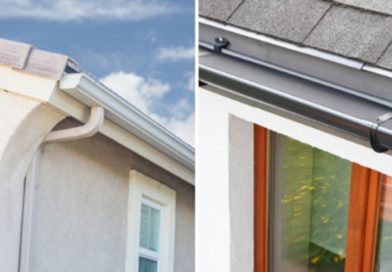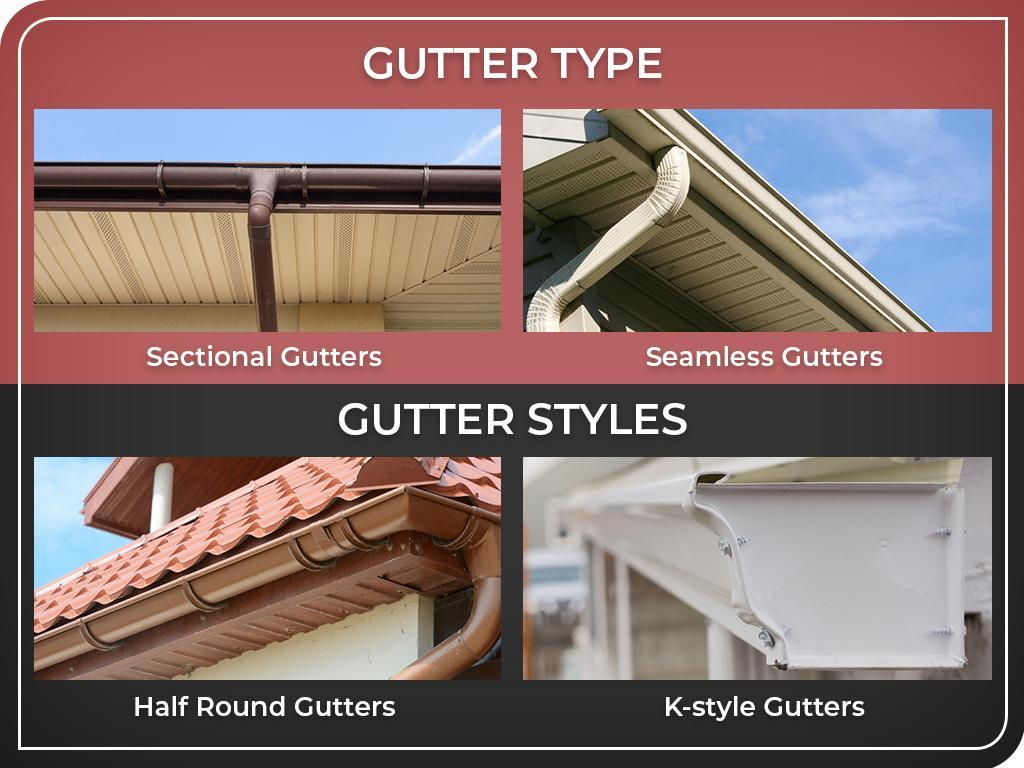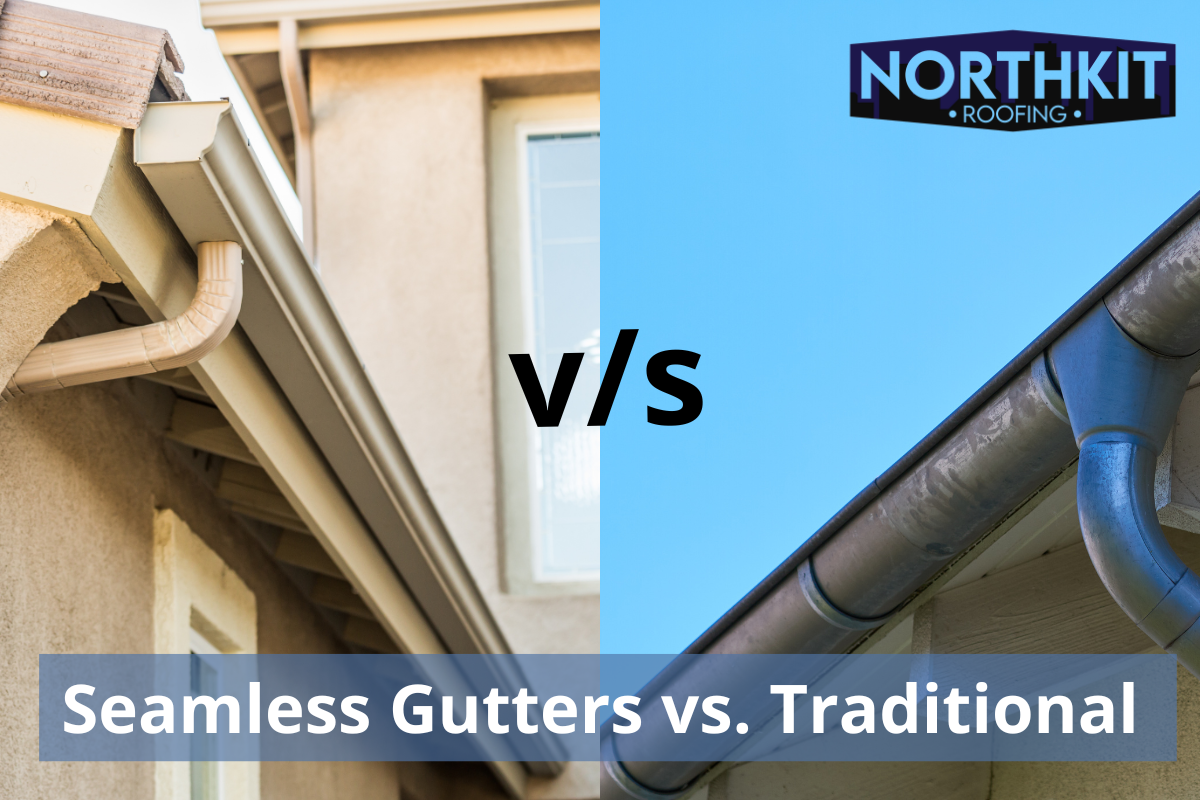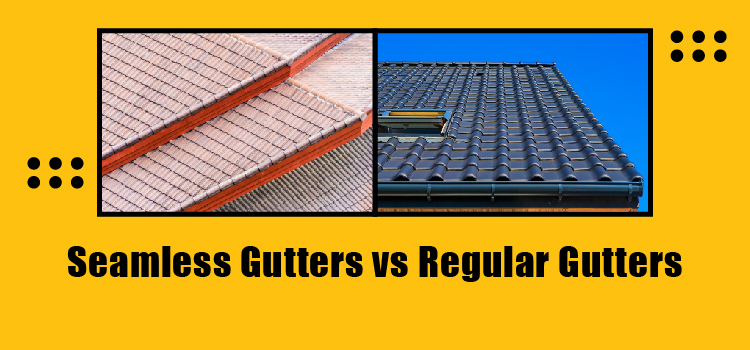Delving into the realm of gutters, the comparison between Seamless gutters and traditional gutters unveils a wealth of insights and considerations. As we navigate through the differences in design, installation, and functionality, join us on this informative journey to discover which gutter system reigns supreme.
 Exploring the fabrication, materials, installation process, and cost-efficiency of both gutter types allows for a detailed examination of their attributes, leading to a well-rounded understanding of their pros and cons.
Exploring the fabrication, materials, installation process, and cost-efficiency of both gutter types allows for a detailed examination of their attributes, leading to a well-rounded understanding of their pros and cons.
 When it comes to gutters for your home, you may have heard about seamless gutters and traditional gutters. Let's take a closer look at the key differences between these two options.
When it comes to gutters for your home, you may have heard about seamless gutters and traditional gutters. Let's take a closer look at the key differences between these two options.
 Seamless gutters are typically fabricated on-site using a specialized machine that forms a continuous length of gutter to fit the exact dimensions of the home. This eliminates the need for seams along the length of the gutter, reducing the risk of leaks and enhancing the overall aesthetic appeal.
Seamless gutters are typically fabricated on-site using a specialized machine that forms a continuous length of gutter to fit the exact dimensions of the home. This eliminates the need for seams along the length of the gutter, reducing the risk of leaks and enhancing the overall aesthetic appeal.
 When it comes to choosing between seamless gutters and traditional gutters, cost and efficiency are important factors to consider. Let's explore the differences in cost and efficiency between these two types of gutters.
When it comes to choosing between seamless gutters and traditional gutters, cost and efficiency are important factors to consider. Let's explore the differences in cost and efficiency between these two types of gutters.
 Exploring the fabrication, materials, installation process, and cost-efficiency of both gutter types allows for a detailed examination of their attributes, leading to a well-rounded understanding of their pros and cons.
Exploring the fabrication, materials, installation process, and cost-efficiency of both gutter types allows for a detailed examination of their attributes, leading to a well-rounded understanding of their pros and cons.
Seamless Gutters vs Traditional Gutters
 When it comes to gutters for your home, you may have heard about seamless gutters and traditional gutters. Let's take a closer look at the key differences between these two options.
When it comes to gutters for your home, you may have heard about seamless gutters and traditional gutters. Let's take a closer look at the key differences between these two options.
Design and Installation
Traditional gutters are typically made of separate sections that are pieced together during installation, creating seams that can potentially lead to leaks over time. On the other hand, seamless gutters are crafted from a single continuous piece of material, custom-fit to your home's measurements, without any seams along the length of the gutter.Advantages and Disadvantages
-
- Seamless Gutters:
-
-
- Less prone to leaks: Seamless design reduces the chances of leaks occurring along the gutter system.
- Low maintenance: With fewer seams, there is less debris buildup and maintenance required.
- Custom fit: Each seamless gutter is tailored to the specific measurements of your home, ensuring a perfect fit.
-
-
-
- Higher cost: The custom-made nature of seamless gutters can result in a higher initial cost compared to traditional gutters.
- Complex installation: Seamless gutters require professional installation due to the precision needed for measuring and fitting.
- Traditional Gutters:
-
-
-
- Lower initial cost: Traditional gutters are generally more affordable upfront compared to seamless gutters.
- Easier repairs: If a section of the gutter gets damaged, it can be replaced without affecting the entire system.
-
-
- More prone to leaks: Seams in traditional gutters can be vulnerable to leaks over time, requiring more maintenance.
- Higher maintenance: Due to the seams, traditional gutters may require more frequent cleaning to prevent clogs.
Design and Construction
 Seamless gutters are typically fabricated on-site using a specialized machine that forms a continuous length of gutter to fit the exact dimensions of the home. This eliminates the need for seams along the length of the gutter, reducing the risk of leaks and enhancing the overall aesthetic appeal.
Seamless gutters are typically fabricated on-site using a specialized machine that forms a continuous length of gutter to fit the exact dimensions of the home. This eliminates the need for seams along the length of the gutter, reducing the risk of leaks and enhancing the overall aesthetic appeal.
Materials Used
- Aluminum: Traditional gutters are commonly made of aluminum due to its lightweight and corrosion-resistant properties. They are available in various colors to match the home's exterior.
- Vinyl: Another common material for traditional gutters, vinyl is affordable and easy to install. However, it may not be as durable as other materials.
- Steel: Steel gutters are sturdy and durable, making them a popular choice for areas with harsh weather conditions. They can be prone to rust if not properly maintained.
Durability and Maintenance
- Seamless gutters are less prone to leaks since they have fewer joints, reducing the chances of water damage to the home. They require minimal maintenance but may be more expensive upfront.
- Traditional gutters, while cost-effective, may require more frequent maintenance due to the presence of seams that can trap debris and cause clogs. Regular cleaning and inspections are necessary to prevent issues.
- In terms of durability, seamless gutters are often considered more long-lasting than traditional gutters, as they are custom-made to fit the home's dimensions and are less susceptible to leaks and wear over time.
Installation Process
Installing seamless gutters involves the following steps:Seamless Gutters Installation Process
- Measure and cut the gutters to the required length at the installation site.
- Seal the gutter end caps and corners with a special adhesive to prevent leaks.
- Attach the gutters to the fascia board using hangers for support.
- Connect the gutter sections using special connectors to create a seamless flow.
- Ensure proper slope for water drainage away from the house.
Traditional Sectional Gutters Installation Process
- Measure and cut individual gutter sections to fit the length required.
- Attach the pieces together using snap-on connectors or screws.
- Secure the gutters to the fascia board using spikes and ferrules.
- Install end caps and seal corners to prevent leaks.
- Ensure proper slope for water drainage away from the house.
Ease of Installation and Potential Challenges
- Seamless Gutters:Easier and quicker to install due to the lack of seams and the ability to customize on-site. However, requires professional installation due to the need for specialized equipment.
- Traditional Sectional Gutters:More time-consuming to install as each section needs to be connected individually. DIY-friendly but may lead to leaks at the seams if not installed correctly.
Cost and Efficiency
 When it comes to choosing between seamless gutters and traditional gutters, cost and efficiency are important factors to consider. Let's explore the differences in cost and efficiency between these two types of gutters.
When it comes to choosing between seamless gutters and traditional gutters, cost and efficiency are important factors to consider. Let's explore the differences in cost and efficiency between these two types of gutters.
Cost Factors
- Seamless gutters are typically more expensive upfront compared to traditional gutters due to the specialized equipment and labor required for installation.
- Traditional gutters may have a lower initial cost, but they may require more maintenance and repairs over time, leading to potential long-term costs.
Efficiency in Water Flow and Clogging Prevention
- Seamless gutters are known for their smooth design, which allows water to flow more efficiently and reduces the chances of clogging.
- Traditional gutters, with their seams and joints, are more prone to clogging from debris buildup, which can hinder water flow and lead to potential water damage.
Cost-Effectiveness in Different Situations
- Seamless gutters may be more cost-effective in the long run for homeowners looking for a low-maintenance option that reduces the need for frequent repairs and replacements.
- Traditional gutters may be a more budget-friendly choice for those on a tight budget or for properties where the initial cost is a primary concern.












